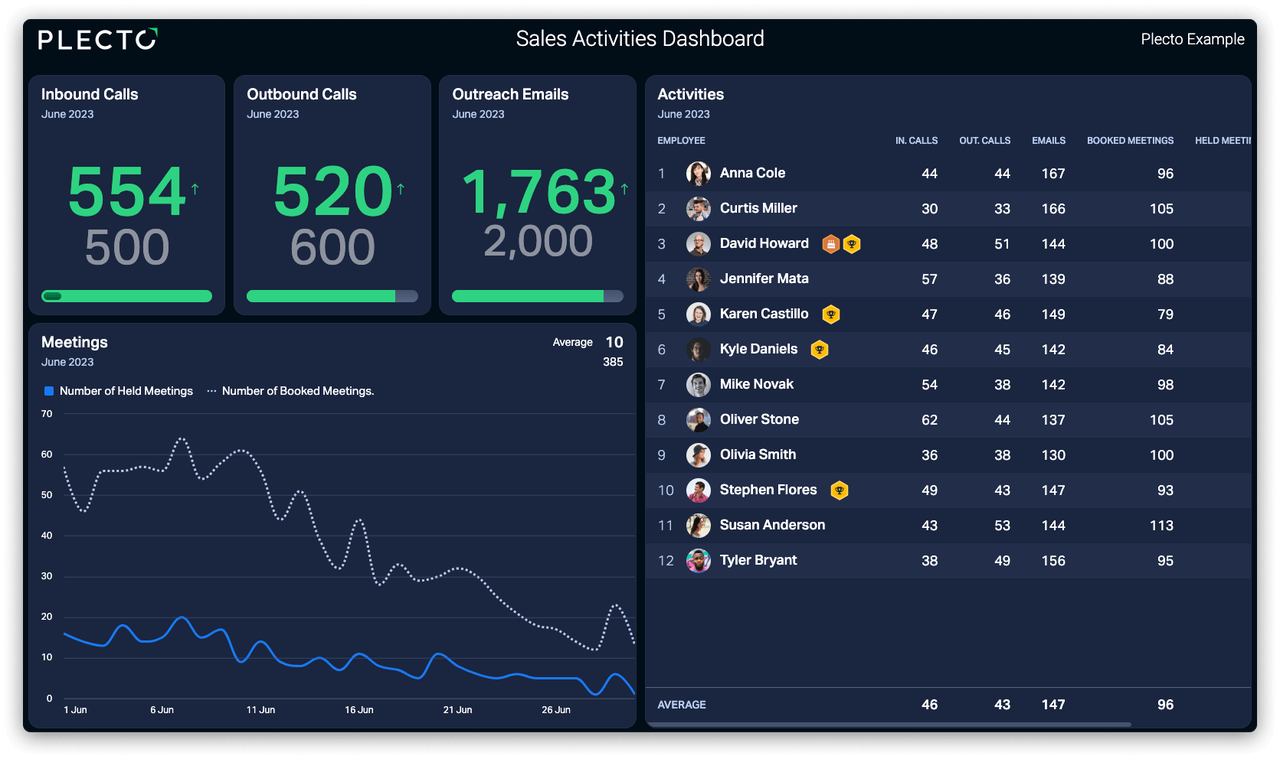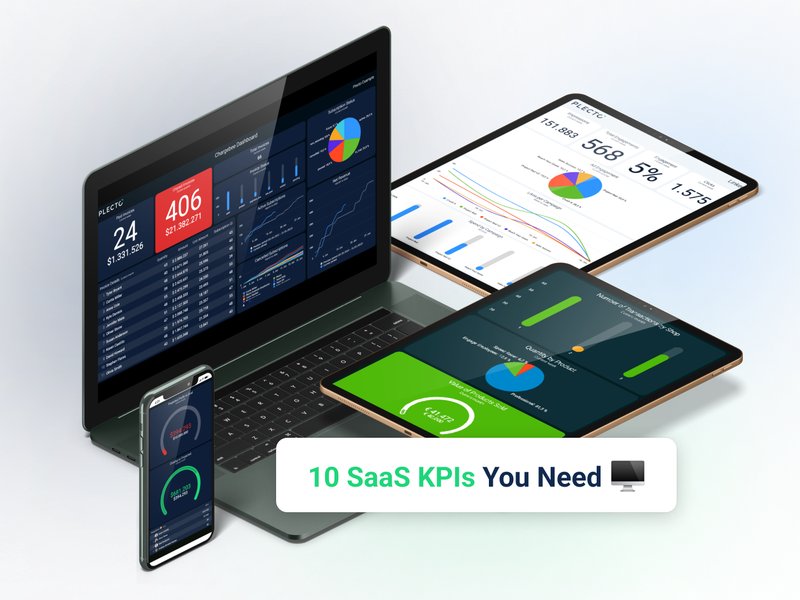You're probably aware of both of these acronyms, but just what exactly do they mean? Both Key Performance Indicators (KPIs) and Objectives and Key Results (OKRs) are popular methods for measuring performance, but what's the difference? In this blog, we take a deep dive into both KPIs and OKRs, taking a look at what makes them different and how you can use both to boost the performance of your team.
What is a KPI?
Key performance indicators, commonly shortened to KPIs, are measurable metrics that are used to evaluate how well your team or individual is doing in pursuing a certain goal or target. KPIs are a well-established measurement for monitoring and assessing performance, enabling you to track your progress and make data-driven decisions. KPIs are typically quantitative, but there are also instances of qualitative metrics. To further break down what a KPI is, here are four characteristics of KPIs:
1. Relevance
KPIs should directly support your team’s goals and objectives. They need to focus on important components of accomplishment and offer insightful information.
2. Measurability
KPIs must be measurable and quantitative. They must be data-driven. This makes it possible to evaluate performance in relation to goals or benchmarks and track progress over time.
3. Specificity
KPIs should define what is being measured and how it is being measured, and they should be clear and explicit. By doing so, uncertainty is reduced and expectations are clearly defined.
4. Time-bound
KPIs are typically established with monthly, quarterly, or annual time frames in mind. This makes it possible to track and evaluate development on a regular basis.
KPI Examples
You have enormous freedom and flexibility when it comes to building KPIs. They can be company-wide, department-specific or relevant just to an individual. To effectively measure performance, it's optimal to use a combination of these.
Here are some examples of KPIs:
- In sales, your KPI is to produce $100,000 in new business revenue every quarter.
- In customer service, a KPI could be to achieve an Average Handling Time of 320 seconds per call.
- In marketing, a common KPI is to generate X amount of new leads every month.

Build your first dashboard.
Start your 14-day free trial today
What is an OKR?
In contrast, Objectives and Key Results - OKRs for short - are a goal-setting system that enables businesses to measure and track their wider strategy.
Unlike KPIs, OKRs are built up of two components Objectives and Key Results. Objectives are high-level goals that describe what a company, team, or person hopes to accomplish over a predetermined period of time. The goals should be challenging, high-quality, and motivating, giving everyone involved a clear path forward. They provide an answer to the question, "What do we want to achieve?"
Key Results meanwhile are precise, measurable milestones or results that show progress toward the goal. Two to five important results are normally linked with each target. Key outcomes are measurable and time-bound, allowing for the tracking and evaluation of accomplishment. The question of "How do we know if we've achieved the objective?" is answered.
OKR Examples
The framework for setting OKRs centers around a constant cycle of development and growth. As explained, there are two components to an OKR, the Objective and the Result. Here is an example of an OKR:
Objective: Boost Customer Satisfaction levels
Key Results:
- Reach a Net Promoter Score (NPS) of 55 by the end of the year.
- Reduce First Response Times to an average of 1 hour.
- Launch customer feedback surveys and receive responses from 500 customers.
This example demonstrates that the different steps that are required. The objective is broad, but by having a set of Key Results, we are also able to identify how we are going to measure this.

What are the differences between OKRs and KPIs?
While both OKRs and KPIs share similarities, they each offer their own benefits. The main difference is that OKRs are a goal-setting framework, and KPIs are specific measurements within that framework. Let's compare...
- OKRs are based on ambitious targets, while KPIs are typically based on current prospects and goals.
- OKRs are the fuel for company-wide motivation, whereas KPIs function best as a performance evaluation tool.
- OKRs are set on a quarterly or yearly basis while KPIs can apply to short-term goals.
- OKRs typically change every so often depending on the broader business strategy. On the other hand, many KPIs remain constant.
OKRs vs KPIs: what to choose?
As much as we don't like to sit on the fence, there is no right or wrong answer when it comes to deciding between OKRs and KPIs. Indeed, it's generally recommended that you try to use both frameworks. Remember, aligning these helps make sure that your overall operation is united in its goals.
KPIs are ideal for keeping track of day-to-day activity where you need to measure performance. For instance, in a customer service department that constantly needs to be in control of calls coming through. OKRs fit better when you are looking to set bigger, more ambitious targets. This could be range from a product development project or the overall company strategy for 6 months.
The importance of measuring performance
Constantly achieving better results is a goal of every team, however, the only way of knowing whether you are on this is through actively measuring and monitoring your performance. If you fail to set goals, then you miss out on the opportunity to learn and grow - irrespective of whether the goal is reached or not. And who knows, perhaps through measuring your performance you will be surprised how quickly you and your team reach your goals.
How Plecto helps measure your performance
As we've hinted at throughout, the key to business success is actively tracking your performance. The best way to do this is through centralized data visualization. With Plecto, you can visualize all your metrics on real-time dashboards for holistic business performance tracking.
But here's the difference, with Plecto, data visualization is incorporated with gamification. So, whenever a target has been hit, then this can be celebrated throughout the company to ensure motivation and morale stays sky-high.
Want to give it a try? Get started on your goal-setting today with a 14-day no strings attached free trial.




